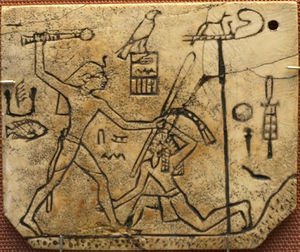Did multi-cultural societies become widely accepted in ancient history
Multicultural societies are today common and ubiquitous, but when did such societies become not only normal or typical but accepted or even celebrated ? Most likely, multi-cultural societies begin to evolve early in prehistory, as ethnic groups migrated to regions and integrated into existing societies. However, we rarely see multiculturalism celebrated until much later in historical periods when large states became the norm.
Early History
If we look at examples of early societies in Egypt, Mesopotamia, India, and China we often see examples of migrations or contacts between different ethnic groups. In many cases, these migrations or contacts are neutral or do not lead to any major confrontation. However, what is clear in many of these regions there is often one main culture that prevails in artistic and intellectual expression. This does not mean cultures were suppressed. On the contrary, integration and assimilation were common, where local customs, languages, and social norms were generally adopted. This is likely unsurprising as migrants presumably would have encountered a majority population and integrating into these majority populations meant that some level of assimilation was needed or at least a de-emphasis on cultural expressions of a minority cultural group. In other words, societies may have been multicultural but multiculturalism was relatively limited. Some cases where some level of multiculturalism may have been evident include societies that adopted foreign gods as a new cultural group emerged. For instance, the Hittites, at around 1800 BC, adopt gods from Mesopotamia and Anatolia.
Nevertheless, many cases of denigrating or undermining populations do exist in the past. In particular, during times of conflict we see official art showing foreigners in a negative light or showing their inferiority to the ruling state (Figure 1).
Rise of Multiculturalism
By the rise of the Achaemenid Empire in Iran, in the 6th century BC, we see a new form of rule emerging. On the one hand, empires now began to expand much larger distances. In the case of the Achaemenids, their state reached from Egypt to Central Asia. With such a vast distance the new ruling dynasties needed new strategies to facilitate the maintenance of large states and enable populations within the large empire to accept their overlords. This may have led to the rise of multiculturalism, as we now begin to see more official celebration of different cultures within the Achaemenid state. For instance, in Mesopotamia, the Persian Achaemenid king depicted himself as Babylonian, while in Egypt we see depictions of the Achaemenid king as Pharaoh. The best example of this is from the reign of Darius I (522-486 BC; Figure 2). In fact, it was during the Achaemenid period from the 6th through 4th centuries BC that the world multiculturalism seems to be first used. In other words, societies were now officially recognized that they contained many cultural groups and that was seen as an asset rather than something that was deemphasized in official propaganda. An example of this, in fact, comes from Persepolis, where we see the architecture now incorporating styles from various areas of the empire (Figure 3). This is also the time we now begin to see the rise of large and multiethnic corporations and trade spanning distant regions, which suggests multiculturalism was found to have had not only ruling benefits, by keeping a large empire together, but facilitated trade and wealth. In fact, it is the increase of wealth and trade that may have created the incentive for multicultural empires to become popular not only in the ancient Near East but by the time the Roman Empire emerges in the Eastern Mediterranean and Near East.
The rise of common languages during this time, first expressed in Aramaic, also likely explains how multiculturalism flourished. In effect, while cultural groups were free to worship as they please in most periods and conduct their own affairs, common language enabled the creation of an identity that groups could relate with to enable the state and, more significantly, the multicultural system to persist.
Continuity in Multiculturalism
In the Near East, and unlike Europe, multicultural empires persisted long after the fall of Rome and, in fact, continued until the fall of the Ottoman Empire in World War I. However, the rise of nationalism in the 19th century and creation of modern nation states did create the opportunity for new political identities that has, to some extent, led to the rise of some of the current conflicts in the Near East that appear to have some ethnic basis. What this shows is that more recent history does not necessarily reflect a historical pattern, where current conflicts between ethnic groups are more likely reflecting new power realities that did not translate to past societies in the region.
Summary
Multicultural societies have existed for millennia. However, how societies have adapted to multicultural realities has varied across time. In particular, the key shift we see in history is societies emphasizing one vs. multiple identities. We see this emphasis happening most profoundly starting during the Achaemenid period, with this pattern mostly continuing in the Near East long after the fall of particular states. In essence, populations saw the benefits of societies that were integrated while also maintaining their ethnic identities, where trade and economic benefits and linguistic commonality facilitated large, multicultural states.
